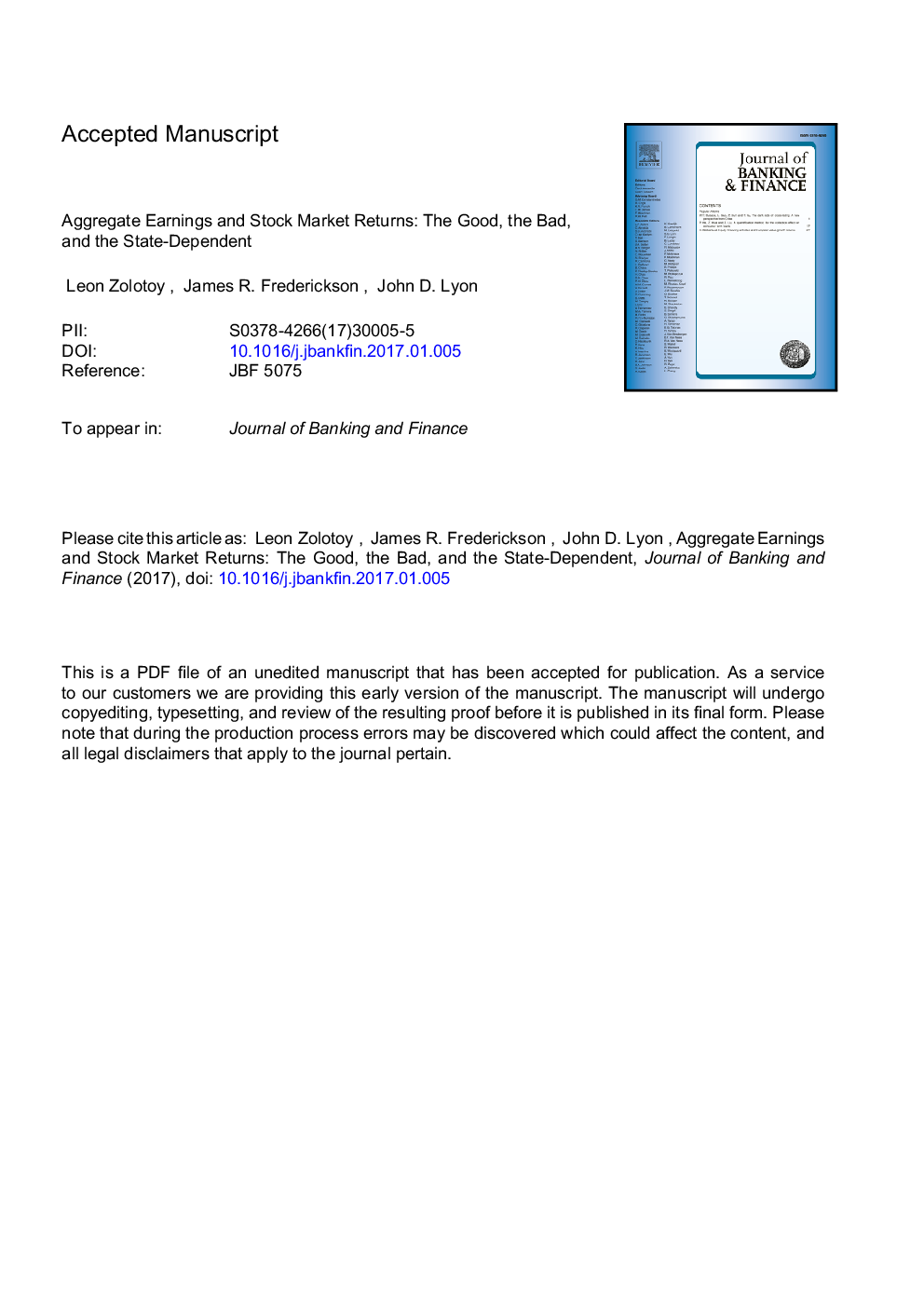ترجمه فارسی عنوان مقاله
درآمد کل و بازده سهام بازار: خوب، بد و وابسته به دولت
عنوان انگلیسی
Aggregate earnings and stock market returns: The good, the bad, and the state-dependent
| کد مقاله | سال انتشار | تعداد صفحات مقاله انگلیسی |
|---|---|---|
| 136016 | 2017 | 66 صفحه PDF |
منبع

Publisher : Elsevier - Science Direct (الزویر - ساینس دایرکت)
Journal : Journal of Banking & Finance, Volume 77, April 2017, Pages 157-175
ترجمه چکیده
تحقیقات پیشین نشان می دهد که درآمد منفی منفی است. در مقابل، ما معتقدیم که نشانه ای از رابطه، بسته به شرایط اقتصاد کلان و بازار مالی که در سه ماهه اعلام درآمد وجود دارد، متفاوت است. ما استدلال می کنیم که شرایط بازارهای کلان اقتصادی و بازار مالی بر شرکت کنندگان در بازار تاثیر می گذارد؟ مرجع مرجع، که به نوبه خود تاثیر می گذارد آیا آنها تعجب مجموع سود را تفسیر می کنند در مورد اجزای تورم مورد انتظار از میزان تخفیف، جزء حق بیمه بازار ریسک نرخ تنزیل، یا جریان های نقدی در آینده. مطابق با این، ما متوجه می شویم که علامت سود و بازده کلی، تغییرات چندین بار در دوره نمونه ما را تغییر می دهد. ما همچنین می بینیم که شرکت کنندگان در بازار، درآمد کلی را تفسیر می کنند تا اطلاعاتی در مورد تغییرات در تورم مورد انتظار (حق بیمه بازار) در صورت اثبات منفی (مثبت) سود منصفانه و بازده منفی باشد. در نهایت، ما شرایط اقتصاد کلان و بازار مالی را مشخص می کنیم که در آن نسبت سود و بازده کلی، بیشتر (کمتر) احتمالا منفی (مثبت) است.

